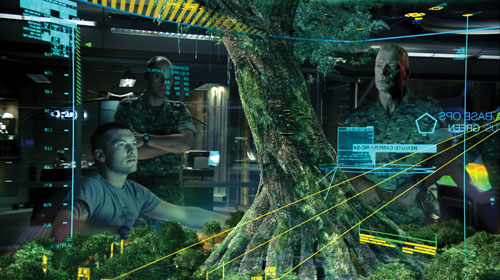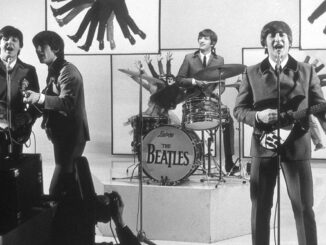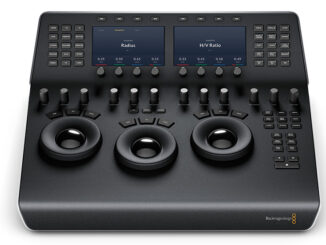
by Michael Kunkes
One thing James Cameron, A.C.E., will never be accused of is not having big enough dreams. It’s a good thing he writes them down. The Terminator, created in the late 1970s out of a fevered dream in a Rome hotel room, was the invention of a young, unknown director, who had to wait nearly six years for his vision to gain a studio. Then in the mid-1990s, Cameron, in almost Edgar Rice Burroughs-like fashion, imagined a fully realized alien world called Pandora (actually a moon, to be precise), and wrote the story and screenplay for Avatar––which was just released December 18 by 20th Century Fox in 2-D, 3-D and IMAX versions.
This time, however, the wait was not for a studio, but for the emergence of not-yet-invented technologies that could effectively create the lush photorealism Cameron envisioned for the world and inhabitants of Pandora. Hopes of making the film in 1995 were dashed, and Cameron shelved his new screenplay, waiting ten years to revive the project, which he would ultimately direct, co-produce and co-edit. “I’ve dreamed of creating a film like this, set on another world of great danger and beauty, since I was a kid reading pulp science fiction and comic books by the truckload,” Cameron says. “With Avatar, I finally got my chance. It’s the most challenging film I’ve ever made.”

Like Cameron’s Terminator films and The Abyss, Avatar is a cautionary tale, a metaphor for mankind’s seemingly unquenchable desire to exploit and, if necessary, destroy what he does not understand in the interests of short-term gain. It is also an almost entirely proprietary synthesis of advanced 3-D and performance-capture technologies, all linked by an unorthodox editorial workflow. “Avatar is a great leap forward, and we set the bar very high,” he says. “If we were going to do a motion picture that would blend photoreal performance capture and live action, it would have to be seamless––and that just hadn’t existed before. The workflow was created completely from scratch.”
When pre-production began in 2005, Avatar was already a completed picture in the director’s mind, and Cameron’s ultimate goal was to actually feel, as much as possible, like he was on Pandora while making the movie. Everything about the production, including editorial, was geared toward that goal. So, rather than take the approach of earlier efforts of capturing actors on a small capture stage, then linearly building the CG characters and editing the film later in a conventional manner, Cameron envisioned an approach whereby he could capture the performances, then select specific readings and takes from every actor to build a “performance cut” of the story.
Once those correct performances were selected, he could create and bring in virtual, pre-loaded sets and backgrounds, create camera angles, modify scenes and, most importantly, literally edit in the virtual environments of Pandora, thereby creating the maximum number of options for the visual effects sequences and fully-realized characters that would be fleshed out by WETA Digital in New Zealand and a host of other vendors. This “front-loading” of the editorial process was ultimately the key to Avatar’s highly detailed narrative and filmic structure.
“What we’ve done on Avatar is to take the editorial process and make it director-centric,” says Cameron, who shared both the 1998 Oscar for Best Film Editing and the ACE Eddie Award for Best Feature Film Editing with Titanic co-editors Conrad Buff IV, A.C.E., and Richard A. Harris. “When a director can walk onto a barren stage, pick up this virtual camera, suddenly see a world that’s not really there, create a 5,000-foot ‘magic carpet’ crane move, or increase the scale of a scene tenfold, and then edit that same scene right on the set––that is an entirely new way to make a movie.”
New, yes. Easy, no. Cameron’s original thought was that he might do the editorial on Avatar himself, or perhaps with one additional editor, based on the results of a group of early performance-capture concept tests, one of which was taken out to a full finish at ILM. “Extrapolating from that test, I thought we’d be able to scale up the entire film from there,” Cameron says. “The problem was that we didn’t do a typical scene full of actors, action, crowds, creatures and backgrounds; instead we did an atypical––for Avatar anyway––two-character dialogue scene.
“The thing about virtual production is that things that are near impossible to create in live action––such as literally moving mountains––are very fast and easy in virtual production,” he continues. “The simplest things in live action–– someone taking a drink from a glass of water, for instance––are ridiculously difficult in CG, because you have to figure out things like refraction, water simulation and reflection, down to the finest detail. You are constantly pushed and pulled in two directions. We underestimated the task of the editing, which, because of all the extra steps involved in the performance-capture process, meant we would be shooting and editing everything twice, and that’s when I brought John and Steve aboard.”
In John Refoua, A.C.E., and Stephen Rivkin, A.C.E.––picture editors with vast experience in working on cutting-edge films––Cameron found two eager collaborators. “I knew I was going to need editing help to make our turnover deadlines on effects shots because WETA Digital [the New Zealand visual effects company], like a voracious beast, needed to be fed constantly; our turnovers to them consisted of to-the-frame––and to-the-pixel––cuts of the scenes; we couldn’t wait until they sent us back shots, so our Templates had to be highly accurate,” Cameron explains. “The learning curve was pretty steep at first; we all evolved together along with the process. I found myself teaching them things that I had only learned a week earlier.”

Photo courtesy of WETA. Copyright 20th Century Fox Film Corporation
Cameron, Rivkin and Refoua divided Avatar up between them, each editor shepherding his own scenes throughout the entire film. “That’s what was so cool about being able to cut right on the ‘Volume’ [performance-capture] stage while we were shooting,” Cameron says. “I would be shooting a take, then one of the editors would get the rendered stream within a couple of minutes, which we’d then just slam into a cut and experiment right there. For example, we could say, ‘Okay, this works if you go to a close-up here, but what if we took the idea of these two shots and made it into one, or what if my one shot isn’t working that well and we wanted to break it into two?’ You had to keep all this stuff in your head to know what the possibilities were, so it got to be a really cool collaboration between three editors. It’s like an editor’s dream in a way, to be able to have the director right there to go over the shot with you, and John and Steve did a lot of pioneering work on this movie.”
For an editor, Cameron says, the seemingly infinite choices provided by the capture process could be exciting, but proved daunting as well. “You can almost get buried by possibilities,” he explains. “In a normal editing situation, depending on the material, you might end up just selecting the performance that has the least number of deficits to it. But with what we’ve created, anything can be in focus, anything can be out of focus, or lit differently at any time. You can do virtual camera work on a performance that was shot six months earlier.
“But because we’re not playing by the rules, and because you have those infinite possibilities, there’s always the risk of getting bogged down,” he continues. “You find yourself asking, ‘Why?’ a whole lot more than you normally might. ‘Why am I on this angle? Why am I on a close-up on this actor when a wide shot might work better?’ In a way, it puts you back to basics as an editor, because you have to be even more rigorous and disciplined about the narrative drive of each moment.”

Photo by Gregory Schwartz
The unorthodox process of Avatar provided each editor a chance to shine. “One of John’s great moments is in the battle scene where Home Tree, the thousand-foot-tall ancestral home of the Na’vi Omaticaya clan, is about to fall. He created this little moment of quiet before the tree falls where everything stops, and you just see leaves falling,” Cameron offers. “That was never in the script; John had done a rough cut and incorporated that moment into it; we built on that editorial idea and did some additional capture to fill in a missing piece.
“Steve also went through several iterations on a knife-fight scene near the end of the film, which we kept trying to shorten and make more focused,” Cameron adds. “We’d look at his cut and see what lines or pickups we needed to do. It was incredibly easy because we didn’t need a set; we could just load any of the virtual sets in 15 minutes, so we could continually go back and change things and pick up additional shots as they were needed.”
Cameron also says that editing played an important role in Avatar’s SimulCam process, which was used to integrate the virtual sets with live-action actors and elements. “As we got down toward the end, we were doing a lot of pickups and slugging in effects shots,” he relates. “For example, if we wanted to create a motion control shot of Stephen Lang in his AMP [amplified mobility platform] Suit for the climactic battle scene, we’d bring Stephen onto the Volume, have him act out the scene in the virtual AMP Suit, cut with that and use it as a guide for the motion-control camera. So, in some cases, my hand-held virtual camera would be used to drive the live-action motion-control camera. The new shot would stream into the Avid, and Steve and John would, in effect, become visual effects comp artists, making sure the shots were working before moving on.”
The live-action 3-D sequences were shot in New Zealand on the Fusion Camera System (originally co-developed by Cameron and Vince Pace of Pace Technologies for Cameron’s Ghosts of the Abyss documentary in 2003), and the 3-D for the effects sequences was fine-tuned in part by yet another proprietary process, called “Wheels.” However, Cameron says that from an editorial standpoint, 3-D was something of a non-issue. “You don’t cut a 3-D movie just like you don’t write a 3-D movie or compose shots in 3-D,” he says. “There are some small accommodations to the stereo that need to be made, but they should always be downstream of the dramatic edit. I don’t think we shifted one cut because of it. More people are going to see Avatar in 2-D anyway, so the edit is the edit; it has to stand on its own.”
When Cameron co-founded Digital Domain in the early 1990s, he wrote a white paper called the “Digital Manifesto,” in which he laid out what was, in the short term, a vision for the company. “It was also about this idea of the ‘image mix,’ a central location where everything would kind of flow to a place where you mix the total image like you mix the sound,” he adds.
The lynchpin of that location––and the future of filmmaking, Cameron believes––is editing. He may not be quite there yet, but with Avatar, he’s gotten closer than anyone else. And besides, Cameron is used to waiting for reality to catch up with his dreams.
A longtime contributor to Editors Guild Magazine (the predecessor to CineMontage) and the Guild’s website, Michael Kunkes was a freelance writer and editor specializing in post-production, production and and animation. He passed away in March 2010.






